Confession 1: I didn’t enjoy the Narnia books. In fairness, I only read two before I felt I’d had enough. But, there it is. The characters seemed ludicrously non-reactive to the extreme circumstances they faced, and the plot (as I recall) 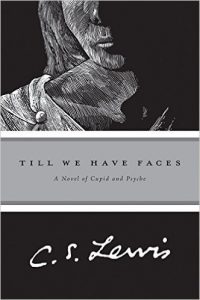 seemed to be a grabbag of whimsy that more or less went nowhere as you waited for Aslan to show up.
seemed to be a grabbag of whimsy that more or less went nowhere as you waited for Aslan to show up.
In fairness, I was not raised as a Christian, and I was only later told about the apparently blatant use of Christian imagery. So, perhaps part of my confusion about the books’ popularity came from entirely missing the point. Then again, perhaps this is why the old religions (it seems to me) are so much more adept at creating compelling epics. What meaning is there in Gilgamesh’s questing or Odysseus’ journey if there is a single omniscient abstraction orchestrating the whole thing?
Till We Have Faces still carries plenty of Christian imagery. In fact, the main character is torn between her local pagan religion, with its funny smells and magical irrationalities, and the skeptical atheistic tradition embodied by a Greek advisor to her family. Of course, she ends up more drawn to something vaguely related to Lewis’ vision of Christianity.
Fine. Now, set that all aside, and realize that this is a wonderful book. The main character, an old woman telling her own history, is absolutely fantastically crafted. There is a richness of understanding in this book, which Lewis contemplated his whole life only to write in his old age. Everywhere is profundity – in the politics of the world, in the various characters, in the way passing time twists understanding of previous events. I, who am not generally a fan of CS Lewis, adored this book. Considering its relative shortness, the emotional depth is remarkable.

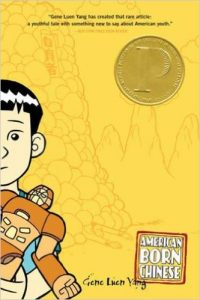
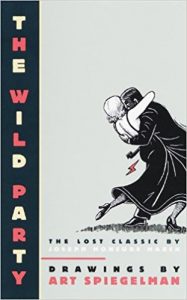
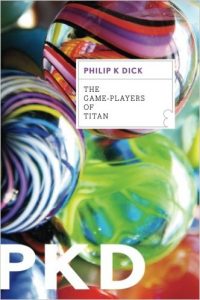 there are strands of pure beauty here and there. But, somehow nothing seems to come together in this book. It feels very rushed and slipshod. The universe of the book really doesn’t make a lot of sense. And, just in terms of showmanship, the game that the Game-Players of Titan play appears to be some variant on The Game of Life. I mean, if you’re going to have an alien game be a major plot element, at least make it cool, no?
there are strands of pure beauty here and there. But, somehow nothing seems to come together in this book. It feels very rushed and slipshod. The universe of the book really doesn’t make a lot of sense. And, just in terms of showmanship, the game that the Game-Players of Titan play appears to be some variant on The Game of Life. I mean, if you’re going to have an alien game be a major plot element, at least make it cool, no?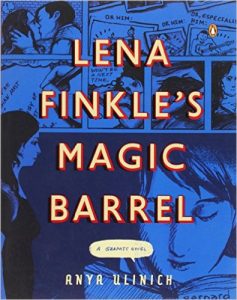 in the City should be. The characters are beautifully crafted and the story is wonderful. Ulinich also does an excellent job of using the vehicle of comics to create the story.
in the City should be. The characters are beautifully crafted and the story is wonderful. Ulinich also does an excellent job of using the vehicle of comics to create the story. elements that make Dick amazing are there, but… somehow it just doesn’t seem to coalesce. Almost all Dick novels follow a pattern, in which a number of small stories are set up in a very strange future reality. The stories are advanced as they bounce against each other, ultimately coming to some sort of resolution. When this works (as in Dr. Bloodmoney, Do Androids Dream of Electric Sheep?, and The Man in the High Castle) it’s magnificent. It’s that part of Mozart’s 40th where suddenly all the melodies intertwine and change.
elements that make Dick amazing are there, but… somehow it just doesn’t seem to coalesce. Almost all Dick novels follow a pattern, in which a number of small stories are set up in a very strange future reality. The stories are advanced as they bounce against each other, ultimately coming to some sort of resolution. When this works (as in Dr. Bloodmoney, Do Androids Dream of Electric Sheep?, and The Man in the High Castle) it’s magnificent. It’s that part of Mozart’s 40th where suddenly all the melodies intertwine and change. meandering and strange, and yet very beautiful. Like all good Dick novels, I can’t really explain it by trying to describe it. It’s a post-apocalypse book, but it’s really not like any other such book. It’s more of a poem in a certain sense. Anyway, go read it.
meandering and strange, and yet very beautiful. Like all good Dick novels, I can’t really explain it by trying to describe it. It’s a post-apocalypse book, but it’s really not like any other such book. It’s more of a poem in a certain sense. Anyway, go read it.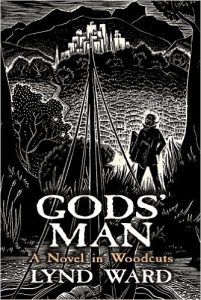 of what would later become the Graphic Novel. It’s a beautiful, if simple, story told in a series of gorgeous woodcuts with an incredible 1920s art deco feel to them. I went through it somewhat quickly, but I find the images stay with me. Definitely worth a look.
of what would later become the Graphic Novel. It’s a beautiful, if simple, story told in a series of gorgeous woodcuts with an incredible 1920s art deco feel to them. I went through it somewhat quickly, but I find the images stay with me. Definitely worth a look.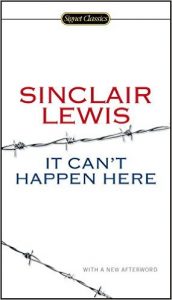 has to do with the idea of a sort of populist fascist coming to power in America). I’m a bit torn on it.
has to do with the idea of a sort of populist fascist coming to power in America). I’m a bit torn on it.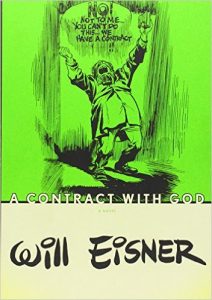 considered the first serious graphic novel. Given that pedigree, it’s interesting to point out that the book is in fact somewhat transitional between books and comics, containing large sections of (hand-drawn) text, with somewhat simple drawings. I didn’t find the stories themselves particularly amazing (sorry if that’s utterly without class to say!) but they aren’t bad, and they are well drawn. And, as a window into the history of comics, it’s quite good. Incidentally, if you are interested in the history of Jewish New York, there’s a lot here for you as well.
considered the first serious graphic novel. Given that pedigree, it’s interesting to point out that the book is in fact somewhat transitional between books and comics, containing large sections of (hand-drawn) text, with somewhat simple drawings. I didn’t find the stories themselves particularly amazing (sorry if that’s utterly without class to say!) but they aren’t bad, and they are well drawn. And, as a window into the history of comics, it’s quite good. Incidentally, if you are interested in the history of Jewish New York, there’s a lot here for you as well.